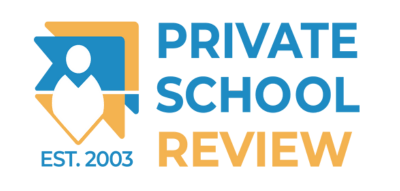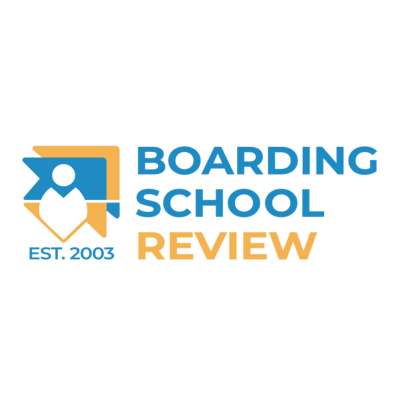By Liz Zweigle, Chief Operating Officer at Truth Tree, and Miriam Stein, Founder of Saddlerock Strategies
As admissions and marketing directors, it might seem counterintuitive, but retention is your highest priority and one of the most important indicators a school can track. A healthy retention rate indicates overall satisfaction and health of the school.
- Measures how satisfied parents are with investment in the school
- Satisfied parents will remain enrolled and generate positive word-of-mouth to encourage other families to enroll
- The mark of a healthy school = 92% retention rate
Value of Enrolled Students
It’s much easier (and cost-effective) to retain a student and a family than it is to find a brand new one. It takes 7x more work and resources to enroll a new family than it does to retain a current one. Think about it, your current families have already learned how to navigate your school’s morning drop-off line, they know how to find their child’s class roster, and their child has friends!
Consider a parent with a Kindergartener at a K-8th grade school. This family represents:
- A potential student for 1st grade next year
- A future student for every grade through 8th
- A potential parent and future alumnus to tell others about your school
- A potential donor this year and beyond
- An opportunity to accomplish your school’s mission
- An opportunity to make a difference in the life of a child during key formative years
- An opportunity to gain tuition revenue not only for this year but for the entire span of your school (with annual tuition of $30,000 a full-pay Kindergarten enrollment will result in $270,000 in tuition revenue (with no increases).
When you break it down in this way, it becomes clear that while it’s important to admit new students, retention is ACTUALLY the priority. It not only sustains the school in the future, but it also takes the pressure off to refill classes and grades along the way, too.
What Affects Attrition
According to the National Association of Independent Schools, private schools see families leave during transition points natural times where some families decide to ask tough questions about their relationship with the school. Their questions may include:
- Division to division, or at grade levels when a class size increases
- Is the student happy?
- Is the student well served?
- Is the social environment congenial for families and kids?
- Does the family feel it is receiving good value for its investment?
- Questions about curriculum
In addition to transition points, the following factors affect attrition:
- Charter, magnet, faith-based schools (cost and values appeal)
- “Free” education
- Strong family ties to a school that starts at an upper-grade level (may compel parents to enroll children as early as possible)
- Highly social (or socially struggling) children may want a larger pool of friends
- Financial reasons, the rising cost of tuition
- Relocation
- Lack of programs
- Disciplinary issues
- Perceived prestige of another school
- Conflict with school philosophy or specific issue
- Lack of leadership and vision for future
- General dissatisfaction
Get Clarity
Do you know which grades/transitions are tricky for your school? Where do you see the most attrition? Is it at a certain grade level? Do you see any themes where gender imbalances come forward? What about socioeconomic or race shifts in grades? Get crystal clear about where attrition is happening and why so you can focus your efforts. Until you see the big themes, consider an exit survey (but take the results with a grain of salt, you might not get the full picture).
Track Students
Is someone at your school monitoring the process for students who apply out? If not, get a new policy and procedures in place. If so, get access to the tracking tool so you can see who is applying out, why, and where.
Consider developing your own tool for tracking students, including rumors, parents who are unhappy, families who aren’t giving to the annual fund, etc. Track students over time to keep track of who might be considering moving on and see larger trends.
What To Do If A Family is Leaving?
It’s natural for families to consider options. Hopefully, you have a good network in place where faculty will let you know if they hear students talking about visiting other schools, or the attendance monitor will let you know if a student is out to visit another school.
Once you know someone is thinking of leaving. What do you do?
Families want to feel valued. Most often the best move is to reach out to the family directly and make it clear that you have heard that they are considering leaving the school. Truly listen and try to understand what they are looking for elsewhere so that you can make the case why they should stay. Consider other faculty or students who could reach out to them to offer another perspective on staying at the school. Don’t let them go without a fight! You are best positioned to re-sell them on the school. They chose your school in the first place. Let’s help them do it again.
In some cases, you may actually think that it is better for the child to attend another school, but you do have a chance to have them leave with a positive feeling about your school. Help them think through options for the next school, offer recommendations, call ahead to the admission director to give them a heads up. You can still use this as an opportunity for a positive interaction with your school, even if the child does not re-enroll.
Shore Up Tricky Spots
Now that you know where, when, and why you are losing students, it’s time to create stopgaps for the short term and implement long-term strategies. But first, bring your colleagues along for the ride. Retention work is everyone’s job, not just the admissions and marketing team. Bring together a subgroup that includes your Head of School and Division Directors. Go through these activities and reflections together so that everyone is aware of your attrition points, strategies at play, and takes ownership of the work.
- If your parents have questions about academic rigor in older grades, create Rising Up Events (give parents a sneak peek at what’s coming up next to quell worries and generate excitement)
- If your families leave after preschool because they are on the public school tract and never considered staying at your school past 4-years-old, add an event/program to highlight how your elementary program builds on their child’s preschool experience and it’s a program they won’t want to miss!
- Re-enrollment Timeline: Consider that you need to remarket to families year-round. How are your social media, newsletters, and communication helping to alleviate worries and/or ensure your families are sticking around to graduation?
- Look for opportunities to bring veteran/alumni parents to campus to showcase the benefits of staying at your school through graduation. They are your best ambassadors for underscoring the advantages of staying through graduation.
- Look at all of the points in which parents receive information/updates about their child’s progress and the strength of your program. For example, how do your curricular events highlight your program?
- How can you better showcase your expert faculty and/or division directors? Or alumni?
- Consider continuous enrollment contracts. Why do we keep asking parents every year if they want to return? Let’s just assume yes!
COVID Families
Many independent families experienced a surge in enrollment when families realized their local public schools would not be in session in person. For many schools, this was an opportunity to capture families who would otherwise not have considered an independent school. These families may deserve an extra spotlight! Consider what’s the best approach for each one. Would it make sense for the principal or another administrator to call them and check in on their child’s experience? Perhaps send them an extra gift around holiday time, reminding them how happy you are that they joined the school community? Check in with teachers on how those students are doing and be sure to check in with the families from the admission office on their plans for next year. These families may have come to the school unexpectedly because of COVID, but they are now a part of your school community, and let’s keep them!
Use Your Digital Marketing Strategy
If you are running digital advertising, don’t miss this chance to build some excitement with your current parents. They will enjoy seeing your ads and it will be a subtle way to remarket to them with your school messaging. You might hesitate to pay for their clicks/views but consider that a few dollars here and there are worth it to keep your families excited and see your school’s marketing investment.
In short, you’re great at what you do! You have the sacred task of helping students get the best possible experience in schools. Dig deep to get to know each family and what they need, and match that up with the very best your school has to offer. And over time, the impact of retaining one student (or 2-3!) each year will have a dramatic effect on your overall sustainability.
Does your school need to focus on retention efforts?
Over half of the Truth Tree team comes from the school world. We know the ups and downs of working to enroll new students just to have families withdraw the same day. Expand your marketing strategy to include remarket to your enrolled families.











